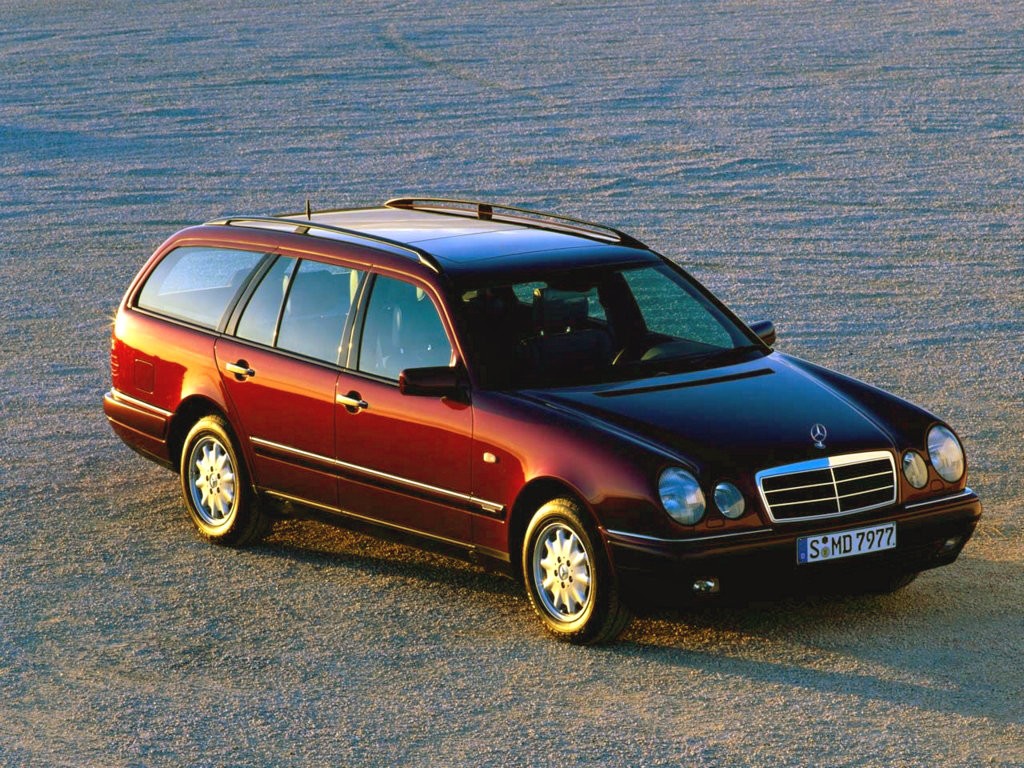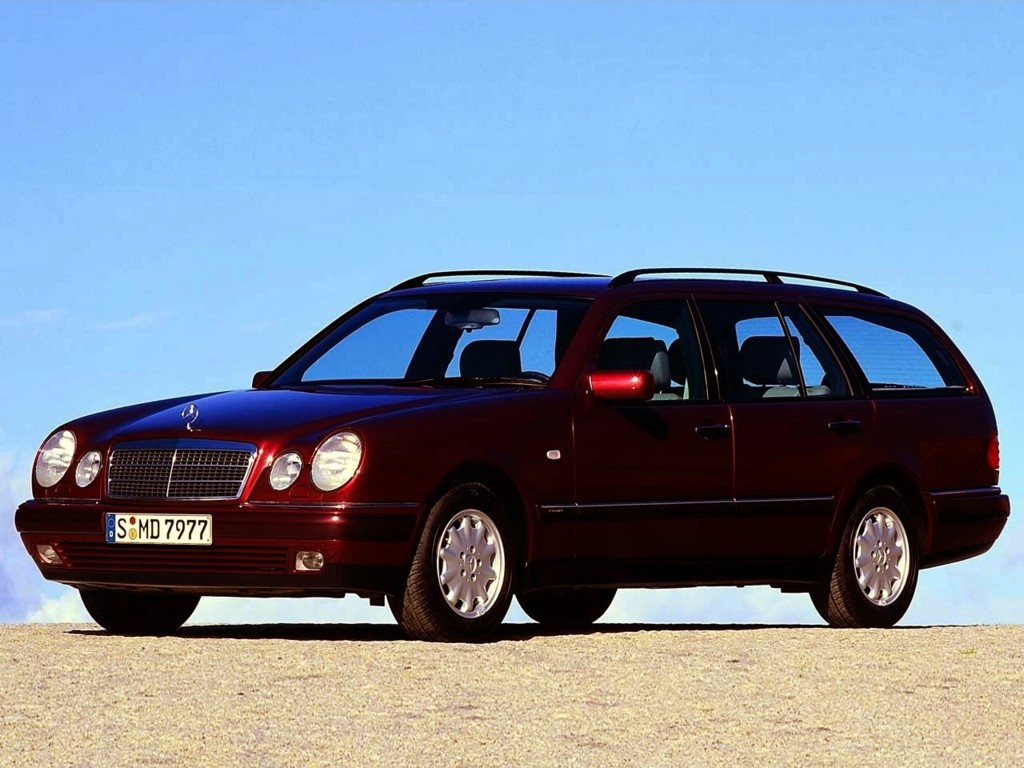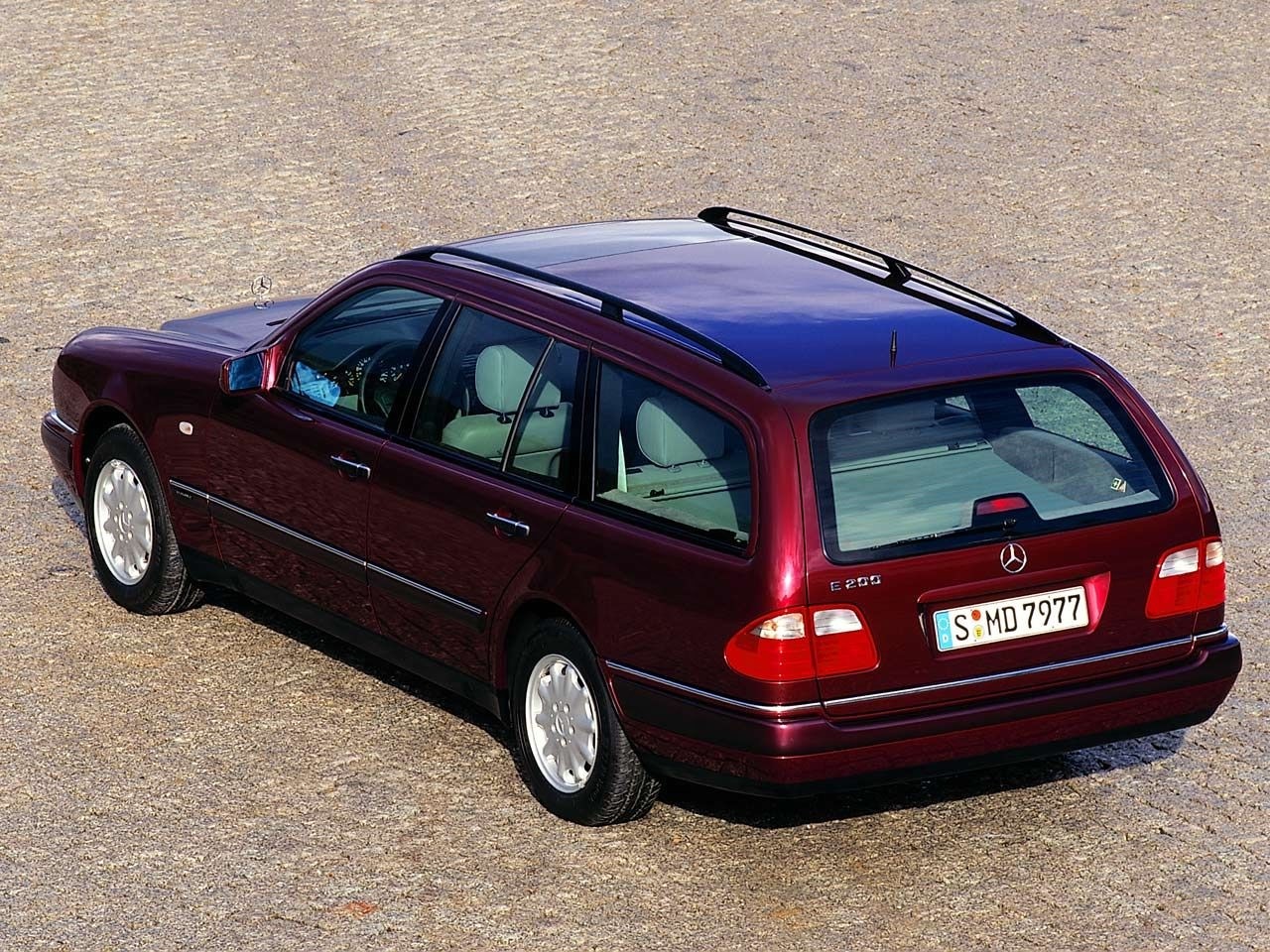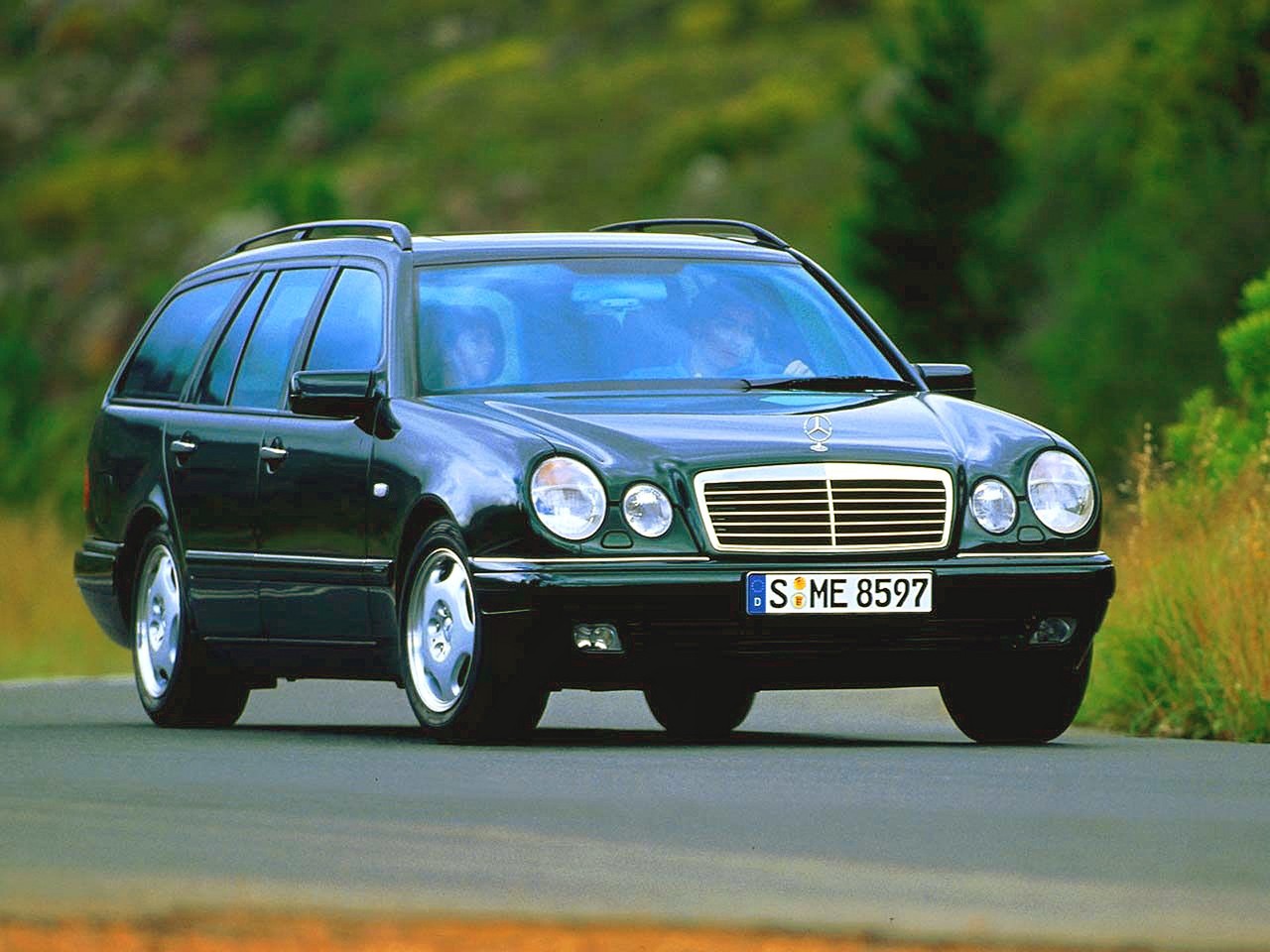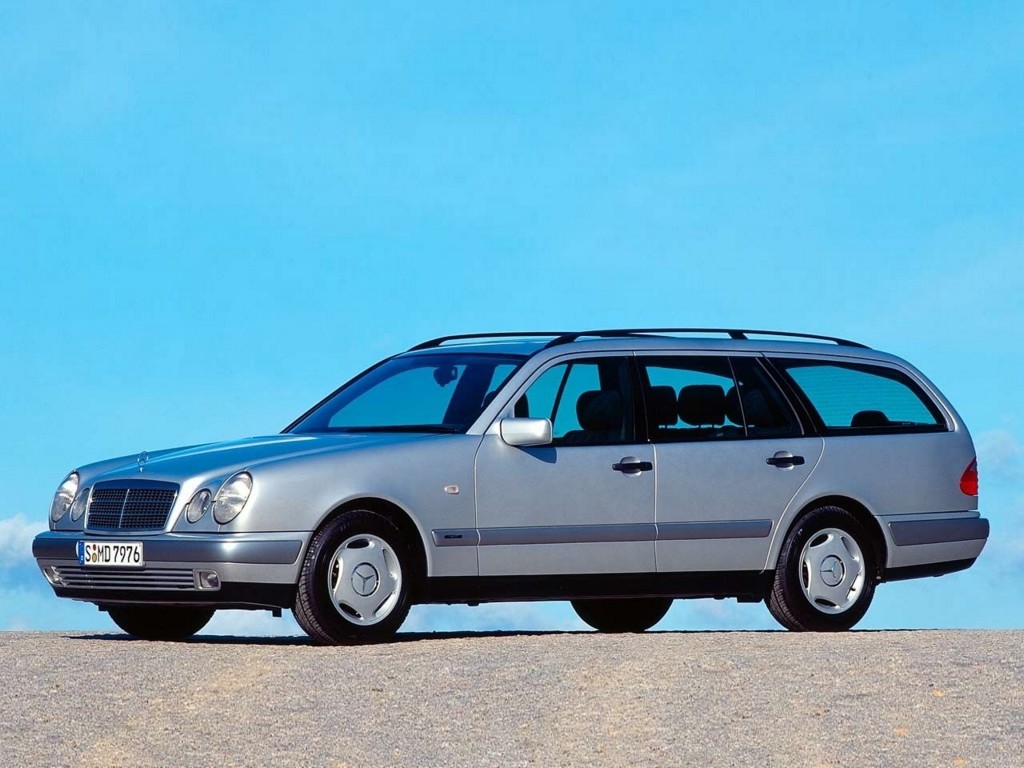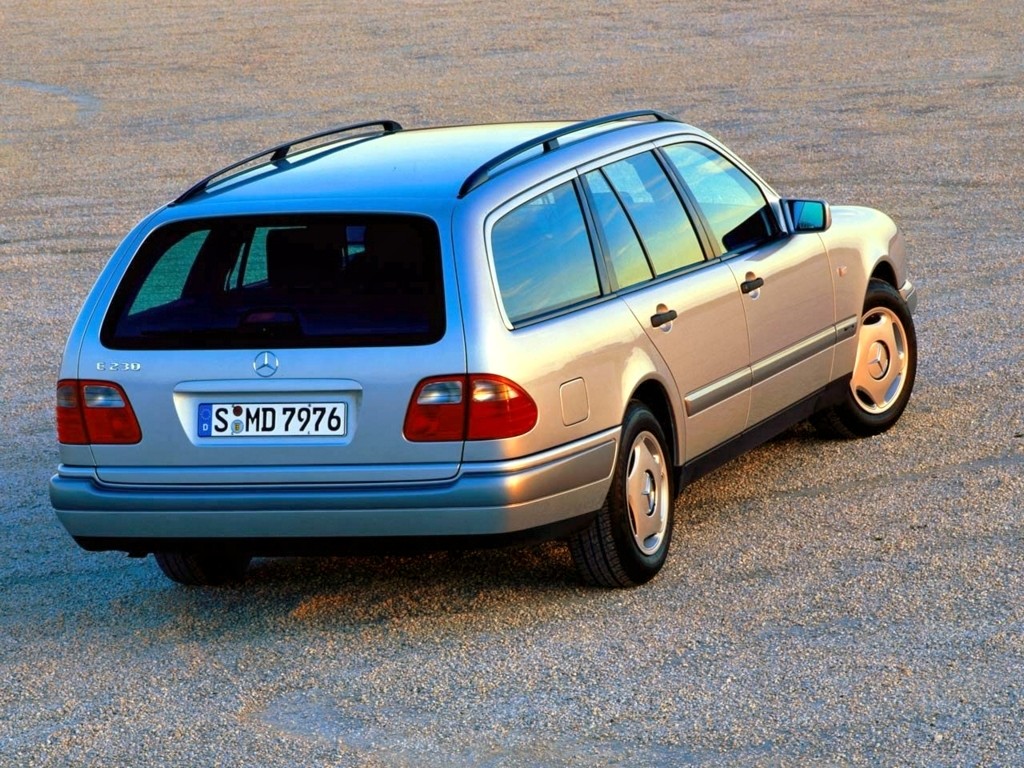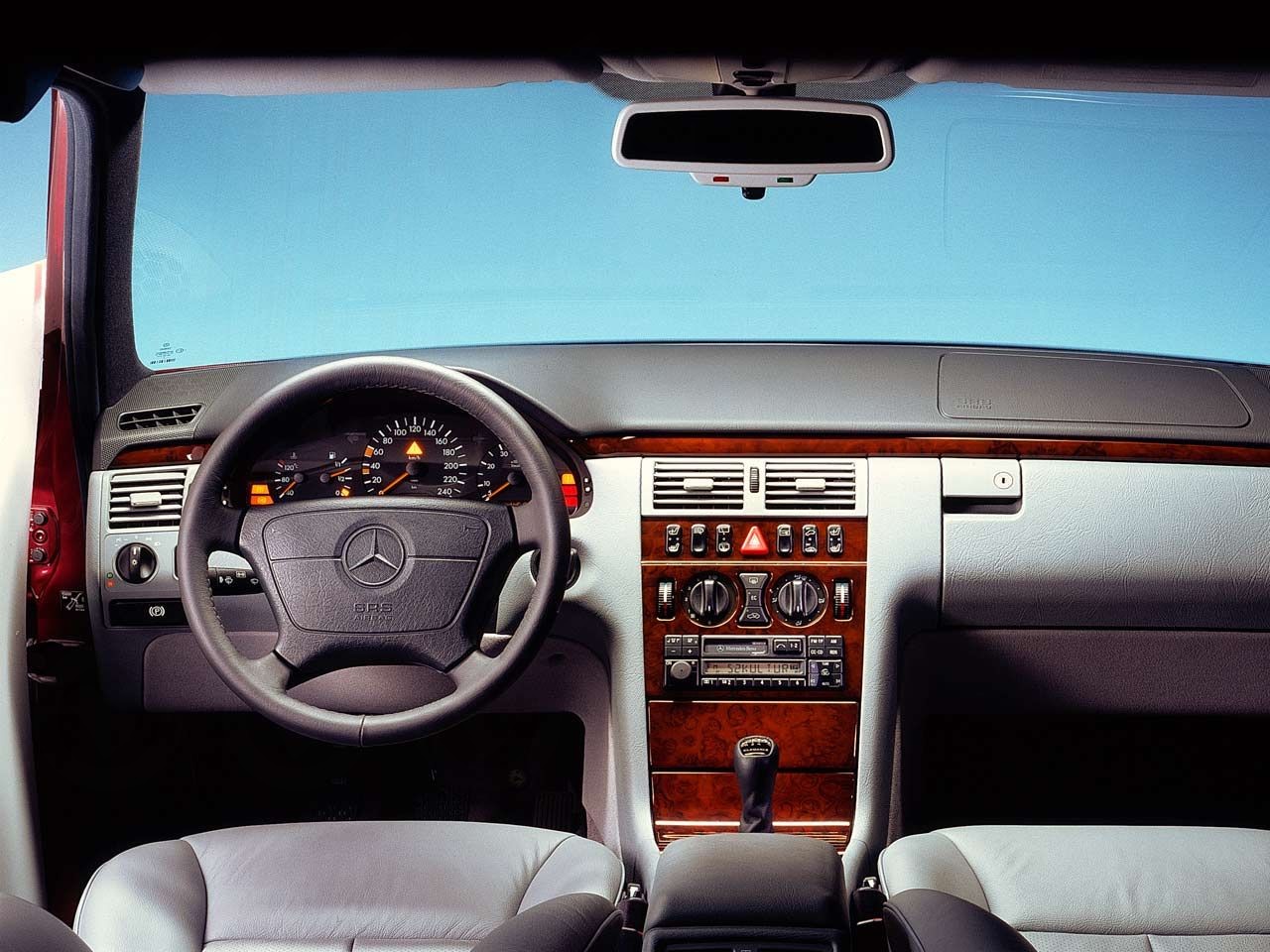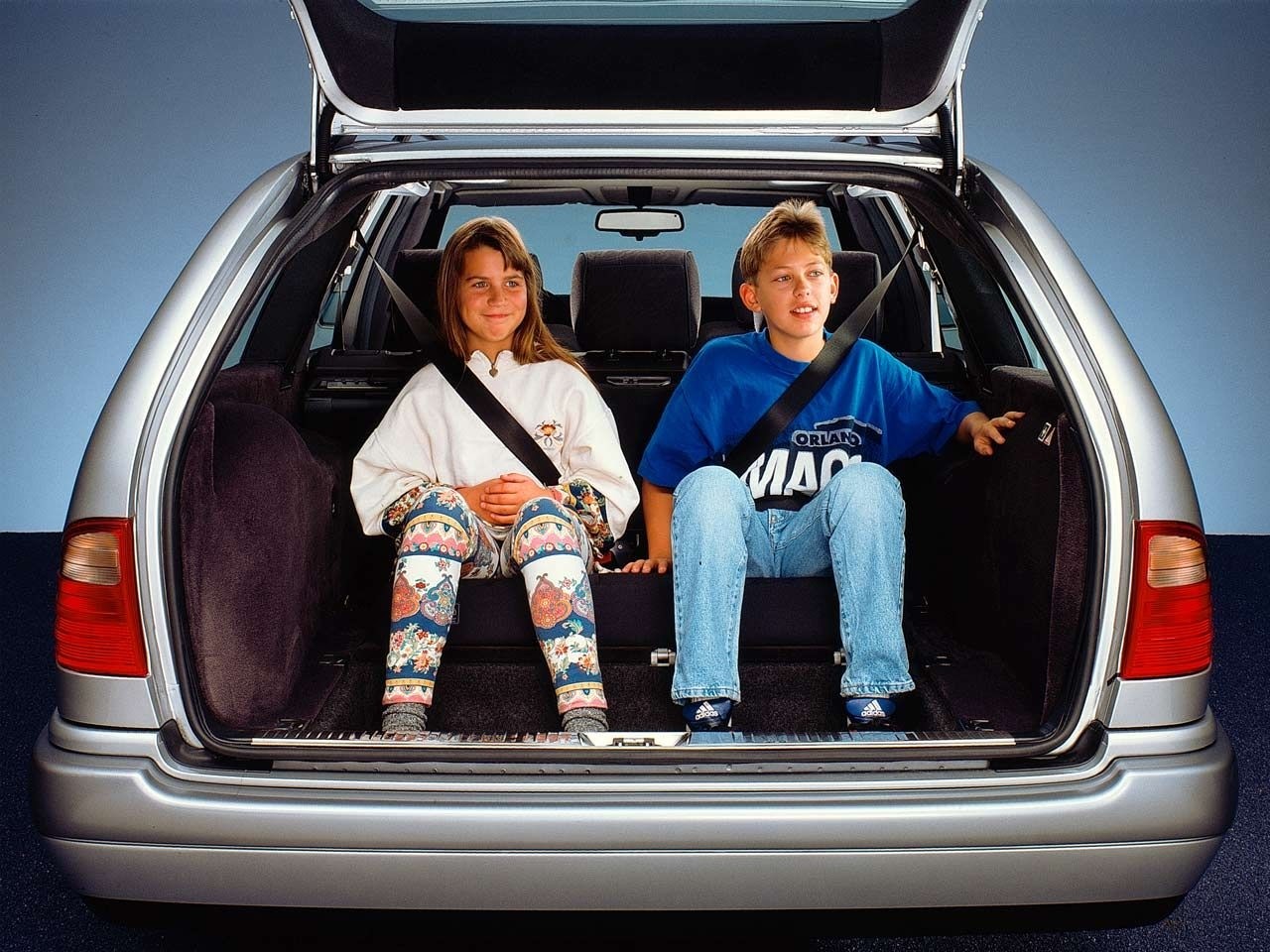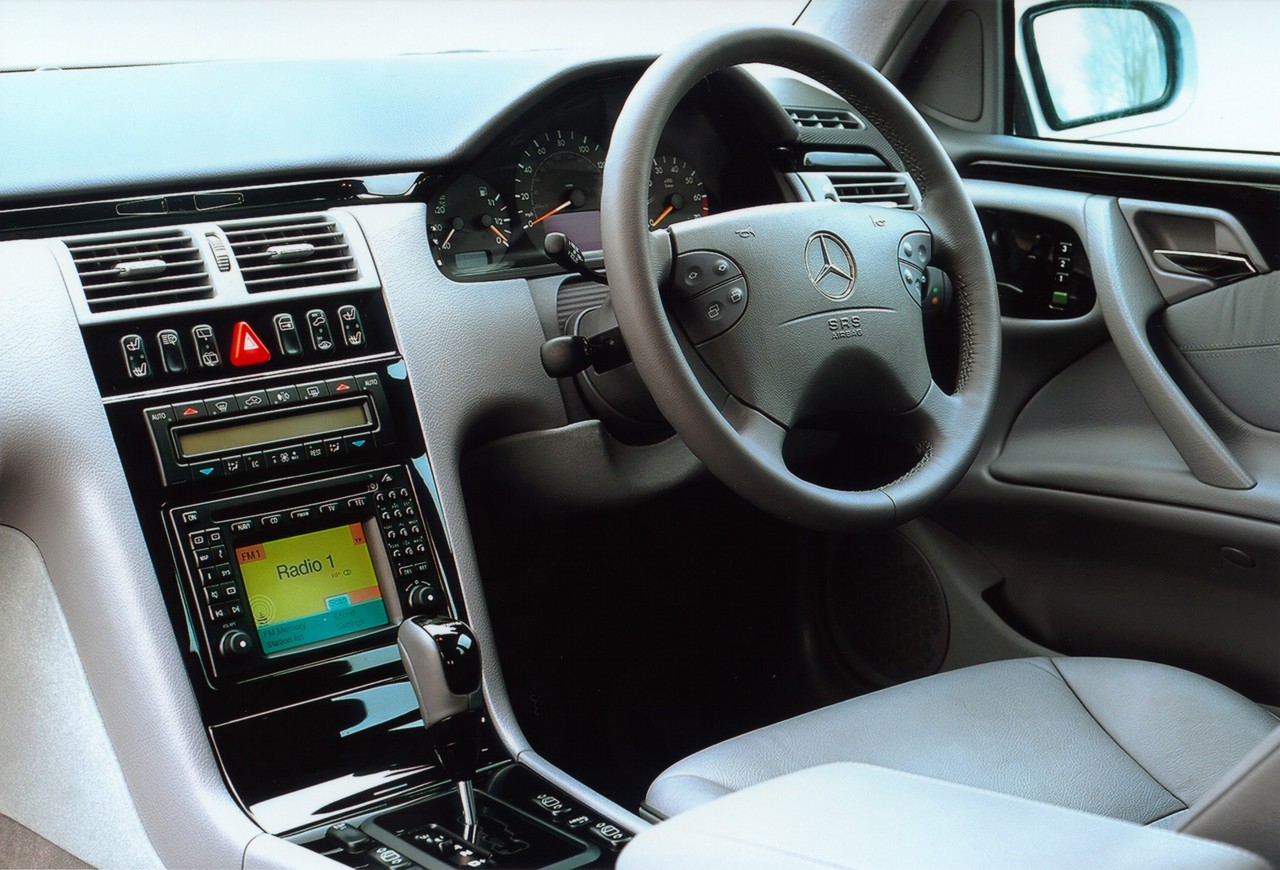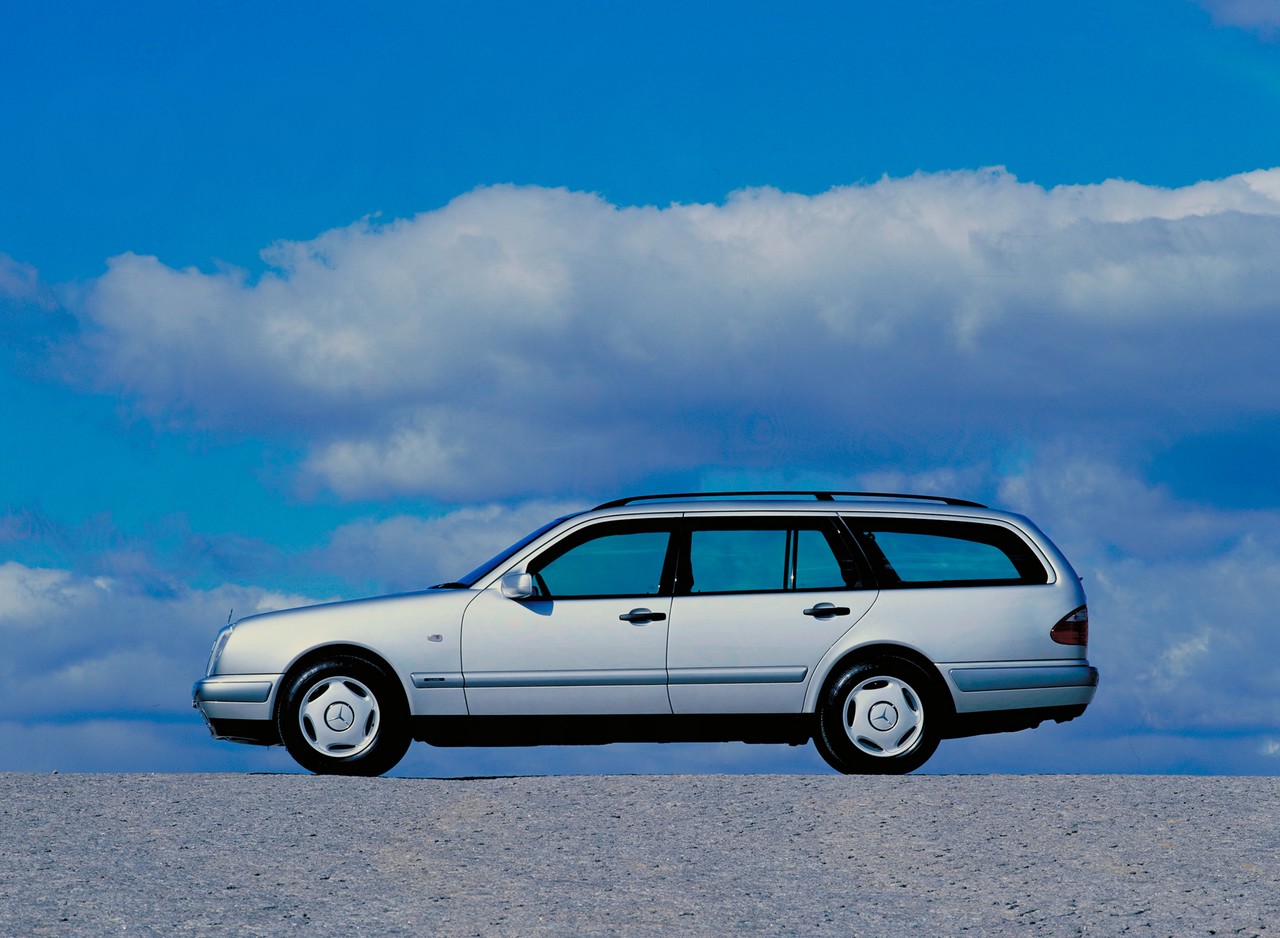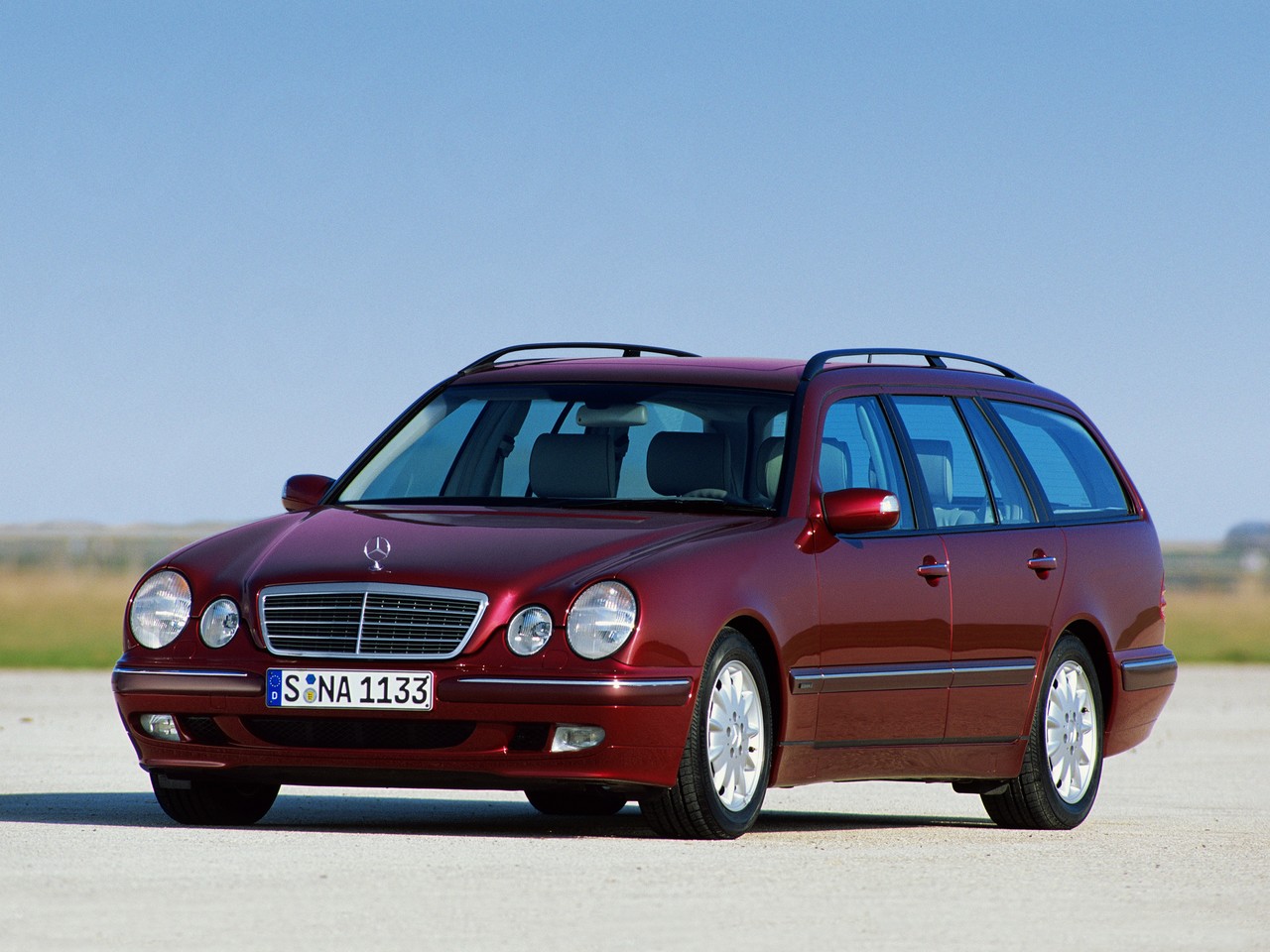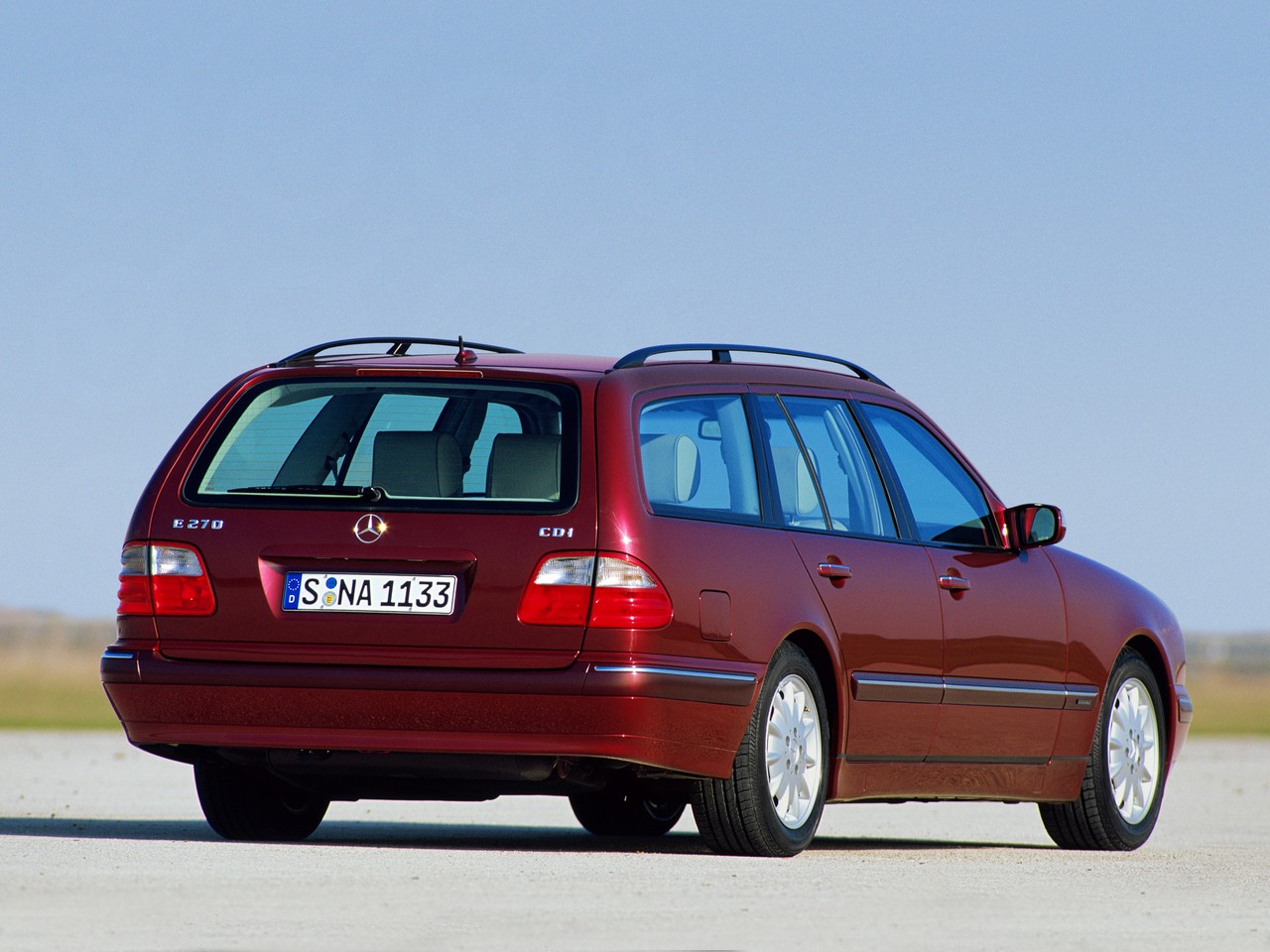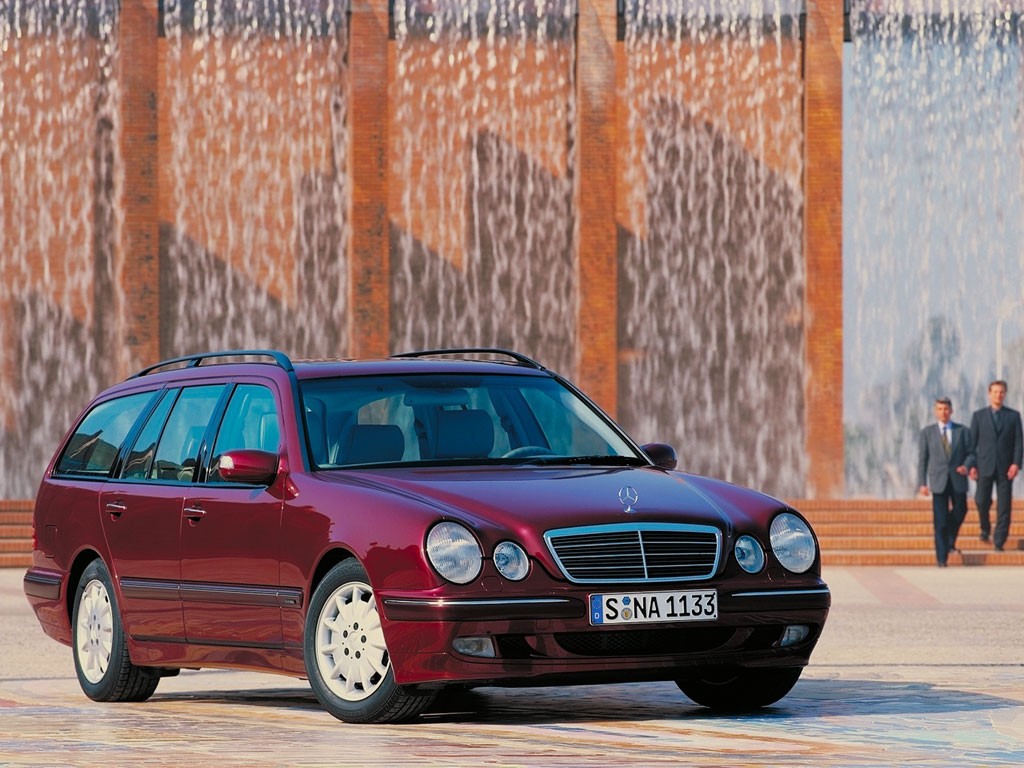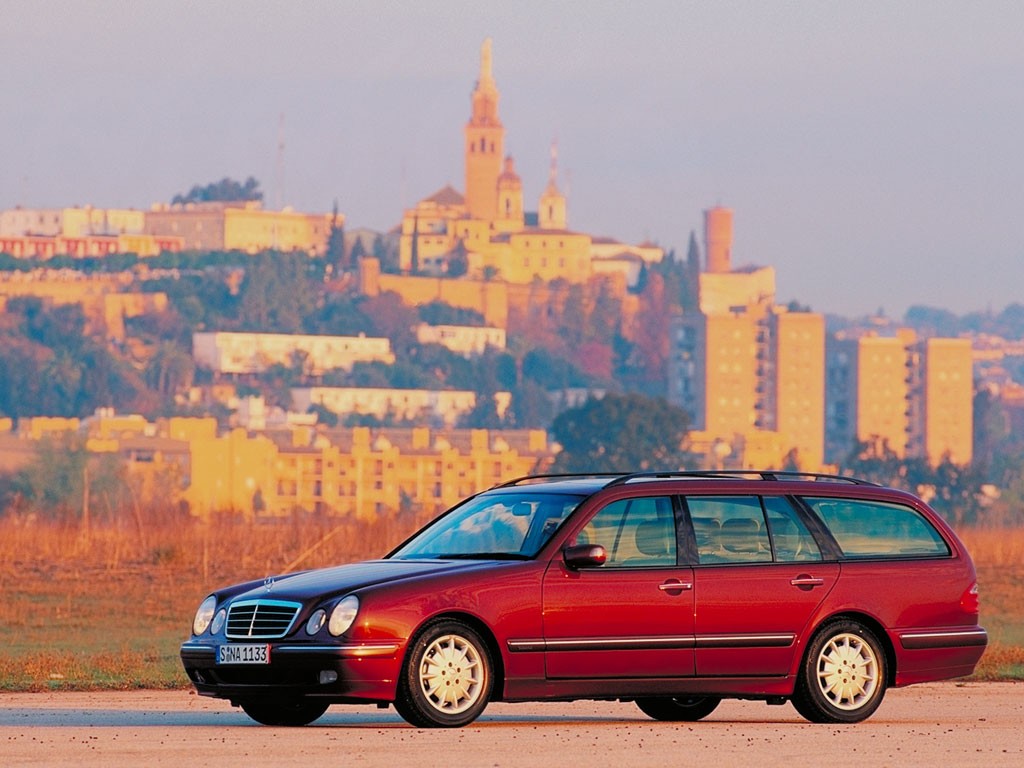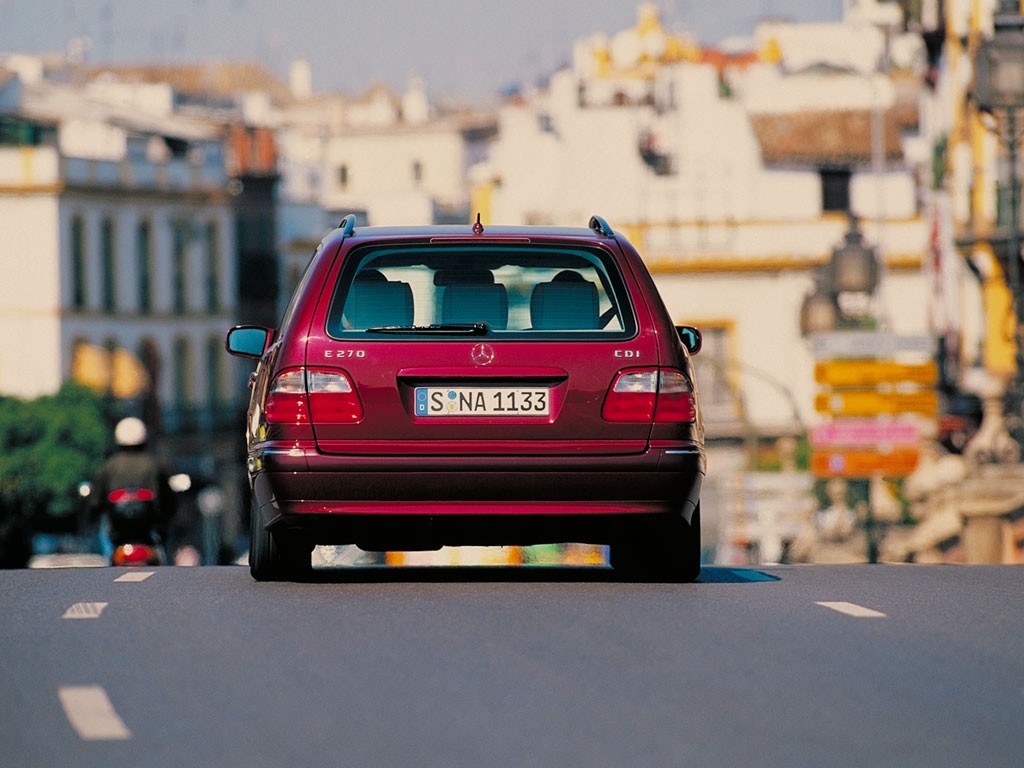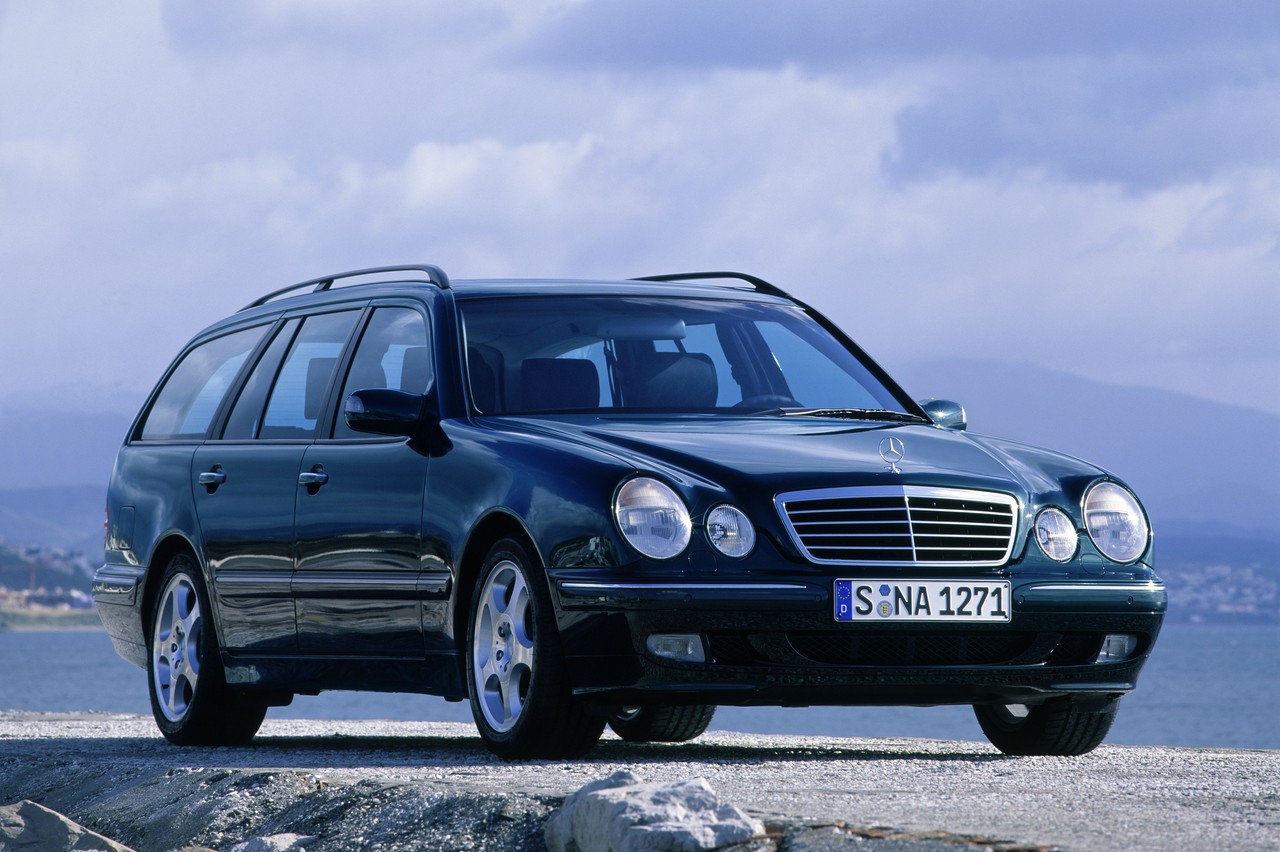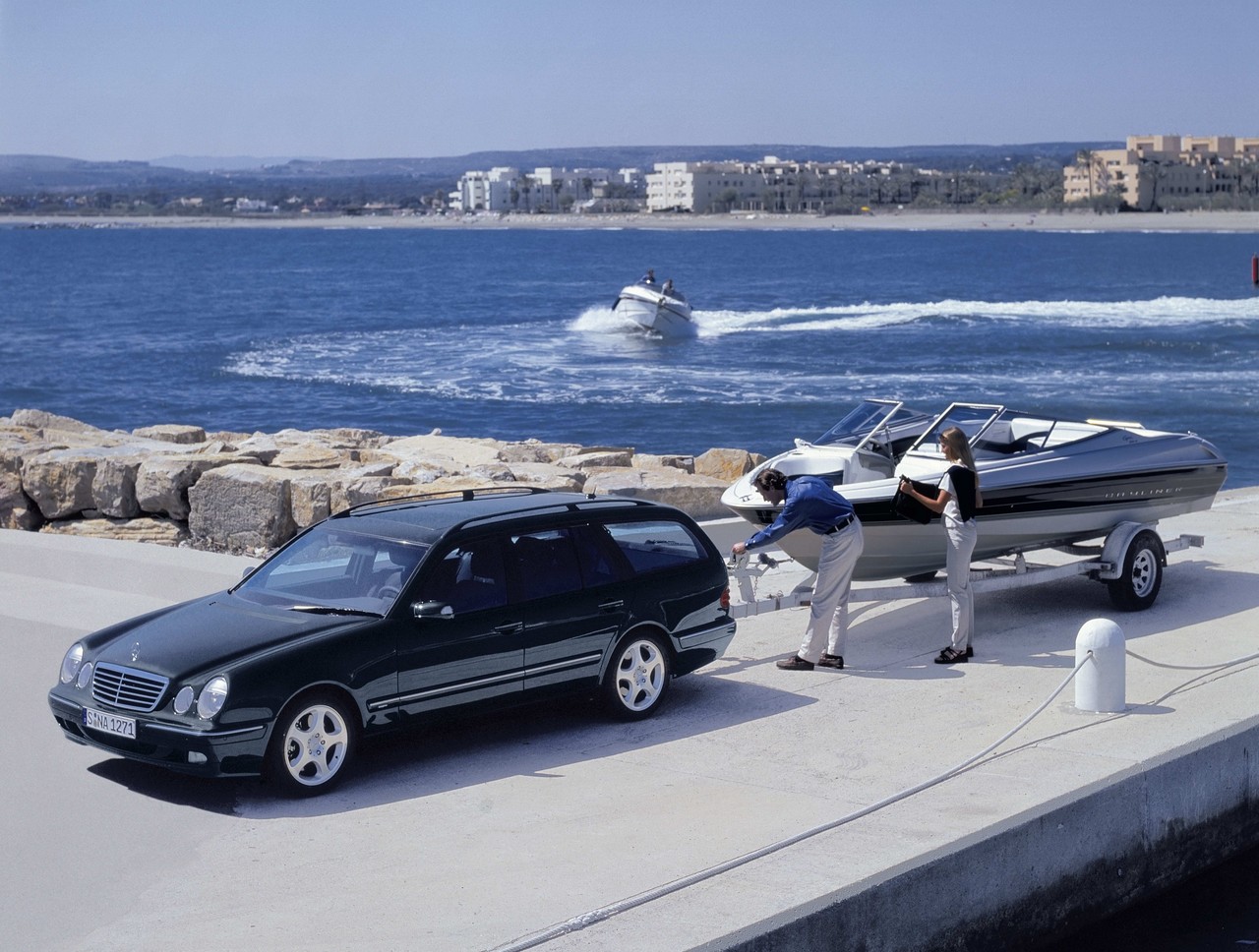
- Impressive ride/handling balance
- Body feels solid and rigid
- High standard of fit and finish
- Quiet, well-insulated cabin
- Hard and flat seats lack support
- Slow steering ratio and lack of response around centre
- Foot-operated parking brake
- Dynamics and driving engagement fall short of BMW E39 5-Series Touring
Review: Mercedes-Benz S210.I E-Class Estate (1996-99)
Overview
Released in October 1996, the Mercedes-Benz S210 Series I (S210.I) E-Class Estate was an executive wagon. Manufactured in Germany, the rear-wheel drive S210.I E-Class wagon range initially consisted of the E 230. In May 1997, however, the range was expanded with the introduction of the E 320 and, in December 1997, the E 230 was replaced by the E 240.
| Variant | Engine | Trans. | Year | Peak power | Peak torque | |
|---|---|---|---|---|---|---|
| E 230 | Classic, Elegance |
2.3-litre petrol I4 (M111) | 5sp auto | 1996-97 | 110 kW at 5400 rpm | 220 Nm at 3700-4500 rpm |
| E 240 | Classic, Elegance |
2.4-litre petrol V6 (M112) | 5sp auto | 1997-99 | 125 kW at 5900 rpm | 225 Nm at 3000-5000 rpm |
| E 320 | Elegance, Avantgarde |
3.2-litre petrol V6 (M112) | 5sp auto | 1997-99 | 165 kW at 5600 rpm | 315 Nm at 3000-4800 rpm |
Dimensions and suspension
The Mercedes-Benz S210 E-Class wagon was 4816 mm long, 1799 mm wide, 1438 mm tall and had a 2833 mm long wheelbase. Furthermore, the S210 E-Class wagon had double wishbone front suspension and independent, multi-link rear suspension (both with coil springs, gas shock absorbers and stabiliser bars).
Safety equipment
Standard safety equipment for the Mercedes-Benz S210.I E-Class included dual front airbags, ABS, traction control (Mercedes-Benz’s Electronic Traction Support or ETS) and front seatbelts with pre-tensioners and load limiters. The E 320 was also fitted with front side airbags as standard.
In June 1997, standard safety equipment was extended to include brake assist which could detect an emergency stopping situation and automatically boost pedal pressure to reduce braking distances. At this time, the ETS was replaced with Mercedes-Benz’s Acceleration Skid Control (or ASR) traction control system. In addition to reducing engine torque, the ASR system also applied brake pressure to the rear wheels at the commencement of wheel-slip. The ASR system also operated at all vehicle speeds, whereas ETS only operated at up to 40 km/h.
Features: Mercedes-Benz S210 E-Class
Standard features for the Mercedes-Benz S210.I E-Class included an eight speaker sound system with a radio and cassette player, air conditioning, cruise control (Mercedes-Benz’s ‘Tempomat’), remote central locking, power mirrors, power windows and an immobiliser.
Beyond this, the E 320 was further equipped with a ten-disc CD changer, power adjustable front seats with driver’s seat memory settings and a leather-wrapped steering wheel.
Variants: Classic, Elegance and Avantgarde
In addition the models listed above, the S210.I E-Class was available in Classic, Elegance and Avantgarde variants –
- Compared to the Classic variants, standard features for the Elegance variants included leather upholstery, leather-wrapped steering wheel and gearshift lever and wood paneling. Visually, the Elegance variants could be identified by their ten-hole alloy wheels and chrome highlights for the door handles, bumpers and side protective strips; and,
- Compared to the Classic variants, standard features for Avantgarde variants were extended to include xenon headlights with dynamic range control. Visually, the Avantgarde variants could be identified by their 16-inch five-hole alloy wheels, lowered sports suspension, five-bar radiator grille with high-gloss black-painted fins, body-coloured B-pillars and, as per the Elegance variants, the Avantgarde variants also had chrome highlights for the door handles, bumpers and side protective strips.
June 1997: E-Class Estate update
In June 1997, the S210.I E-Class received the following updates (in addition to the safety equipment upgrades, above):
- the Tempomat cruise control was replaced with Mercedes-Benz’s ‘Speedtronic’ system which could be applied at any speed above 30 km/h and varied by 10 km/h increments;
- Mercedes-Benz’s ELCODE electronic and driver authorization system was introduced. The ELCODE system replaced the mechanical ignition key with an electronic unit which automatically started the engine once the key was inserted into the ignition/starter switch; and,
- Mercedes-Benz’s Active Service System (ASSYST) was also introduced; ASSYST monitored oil condition to determine when the vehicle needed to be serviced, providing this information via a digital display in the instrument binnacle.
Review: Mercedes-Benz S210.II E-Class Estate (1999-02)
Overview
Released in November 1999, the Mercedes-Benz S210 Series II (S210.II) E-Class Estate introduced additional safety equipment, ‘tip’ or sequential shift automatic transmissions and a new turbo-diesel engine. The full range is given in the table below.
Visually, the S210.II E-Class Estate could be identified by its 15-20 mm lower bonnet, revised radiator grille, body-integrated bumpers with redesigned air intakes and fog lamps, indicators integrated in the door mirror housings, body-coloured door handles and side skirts, body-coloured side rub strips and new tail-lights. Inside, there was a new instrument cluster with a central display, new fabrics and trim, an updated centre console and a multi-function steering wheel from the W220 S-Class.
| Variant | Engine | Trans. | Year | Peak power | Peak torque | |
|---|---|---|---|---|---|---|
| E 240 | Classic, Elegance |
2.4-litre petrol V6 (M112) | 5sp auto | 1999-02 | 125 kW at 5900 rpm | 225 Nm at 3000-5000 rpm |
| E 320 | Elegance, Avantgarde |
3.2-litre petrol V6 (M112) | 5sp auto | 1999-02 | 165 kW at 5600 rpm | 315 Nm at 3000-4800 rpm |
Safety equipment
Standard safety equipment for the Mercedes-Benz S210.II E-Class Estate included dual front airbags, front and rear seat-mounted side airbags, full-length curtain airbags (i.e. for front and rear occupants), ABS, brake assist, electronic stability control, traction control and front seatbelts with pre-tensioners and load limiters.
Features: Mercedes-Benz S210.II E-Class Estate
Standard features for the Mercedes-Benz S210.II E 240 included an eight speaker Audio 10 sound system with a CD player, climate control air conditioning, power adjustable front seats, leather seat inserts, cruise control, front and rear fog lights, multi-function steering wheel, split and folding rear seats, remote central locking, power windows and heated mirrors, courtesy lights and an immobiliser.
Relative to the E240, the E 320 was further equipped with alloy wheels, a six-disc CD changer, ten-way power adjustable front seats with memory settings, full leather upholstery and a leather-wrapped steering wheel and gearshift lever.
Variants: Classic, Elegance, Avantgarde
In addition to the various models, the E-Class Estate range was available in Classic, Elegance and Avantgarde variants – these different variants partly explain the differences in the features of the models described above (which are given in the base variant). The variants had the following attributes:
- Classic: leather seat inserts and poplar wood interior trim;
- Elegance: alloy wheels, a six-stack CD changer, leather-wrapped steering wheel and gearshift lever, an electrochromatic rear view mirror, burl walnut interior trim and chrome trim on the door handles and side protection strips; and,
- Avantgarde: alloy wheels with sports suspension, a six-stack CD changer, leather seats, xenon headlights, an electrochromatic rear view mirror, unique radiator grille, gray glass for the reversing lights, blue-tinted windows, grey instrumentation and black bird’s eye maple wood trim.
Related links
